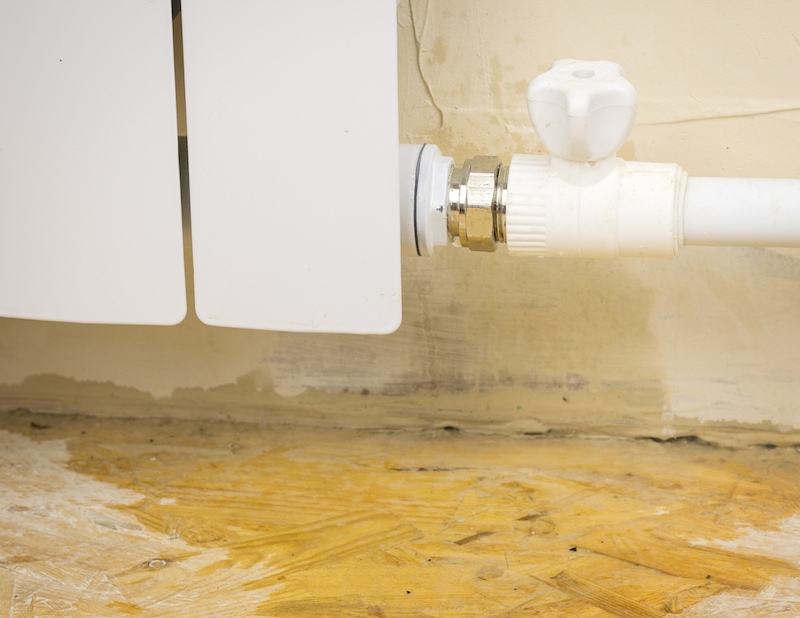The Home's Most Typical Leak Triggers: Analysis
The Home's Most Typical Leak Triggers: Analysis
Blog Article
Just about everyone has got his or her own conception with regards to How to detect water leaks in your home.

Leaks not just trigger waste of water however can likewise create unnecessary damage to your house and also promote unwanted natural development. Water leakages could go undetected given that many of the pipework in our residence is concealed. By understanding and also looking for daily scenarios that create leaks, you can secure your house from future leakages and also unnecessary damage. Today, we will certainly look at six leak causes that might be creating your pipelines to leak.
Intruding origins
Most water leaks begin outside your house rather than inside it. If you discover a sudden decrease in water pressure, say in your tap, require time to head out as well as analyze your lawn. You might observe damp patches or sinkholes in your backyard, and that might indicate that tree origins are getting into water lines creating water to permeate out. You can have your plumber check for invasion, specifically if you have trees or bushes near your home.
Rusty water supply
This might be the cause of discoloration or bending on your water pipelines. If our plumbing system is old, think about replacing the pipes considering that they are at a greater threat of corrosion than the more recent models.
Faulty Pipe Joints
The factor at which your pipelines connect is frequently the weakest link in the waterline. Pipeline joints can deteriorate in time, causing water leakages. Regrettably, the majority of pipeline joints are not easily noticeable. If you have noisy pipes that make ticking or banging sounds, especially when the warm water is turned on, your pipe joints are most likely under a lot of stress. It is advisable to have your plumber examine your system annually.
Immediate temperature adjustments.
Severe temperature level modifications in our pipes can create them to increase as well as contract all of a sudden. This growth and tightening may cause splits in the pipes, specifically if the temperature are below freezing. If you maintained an eye on just how your plumbing works, it would certainly be best. The visibility of the previously stated scenarios regularly indicates a high danger.
Poor Water Connectors
At times, a leakage can be caused by loosened hose pipes and also pipes that provide your home appliances. In case of a water links leak, you might notice water running directly from the supply line or pools around your home appliances.
Obstructed Drains
Clogged drains may be bothersome and inconveniencing, yet they can sometimes end up triggering an overflow causing break pipes. Keep removing any materials that may drop your drains pipes that can obstruct them to prevent such aggravations.
All the above are sources of leakages yet not all water leaks result from plumbing leakages; some leakages might come from roof leaks. All leakages need to be repaired quickly to stay clear of water damage.
Leaks not only trigger waste of water however can also create unneeded damages to your residence and promote unwanted organic development. By looking as well as recognizing for day-to-day scenarios that trigger leakages, you can safeguard your home from future leaks and unneeded damage. Today, we will look at 6 leak creates that may be causing your pipes to trickle.
At times, a leakage can be created by loosened tubes as well as pipelines that supply your devices. In case of a water connections leak, you may see water running straight from the supply line or puddles around your home appliances.
How To Check For Water Leak In Your Home
How To Check for Leaks
The average household's leaks can account for nearly 10,000 gallons of water wasted every year and ten percent of homes have leaks that waste 90 gallons or more per day. Common types of leaks found in the home are worn toilet flappers, dripping faucets, and other leaking valves. These types of leaks are often easy to fix, requiring only a few tools and hardware that can pay for themselves in water savings. Fixing easily corrected household water leaks can save homeowners about 10 percent on their water bills.
To check for leaks in your home, you first need to determine whether you're wasting water and then identify the source of the leak. Here are some tips for finding leaks:
Take a look at your water usage during a colder month, such as January or February. If a family of four exceeds 12,000 gallons per month, there are serious leaks.
Check your water meter before and after a two-hour period when no water is being used. If the meter changes at all, you probably have a leak.
Identify toilet leaks by placing a drop of food coloring in the toilet tank. If any color shows up in the bowl after 10 minutes, you have a leak. (Be sure to flush immediately after the experiment to avoid staining the tank.)
Examine faucet gaskets and pipe fittings for any water on the outside of the pipe to check for surface leaks.
Undetected water leaks can happen without the home or business owner even realizing. If you suspect a water leak, but not able to find the source. It is time to contact a professional water leak detection service, The Leak Doctor.
How To Find a Water Leak In Your Home
https://www.leakdoctor.com/blog/How-To-Check-For-Water-Leak-In-Your-Home_AE197.html

I was made aware of that article about Top Causes of Home Water Leaks through an associate on our other domain. Enjoyed reading our content? Please share it. Let someone else locate it. Thanks a lot for going through it.
Achieve peace of mind. Report this page